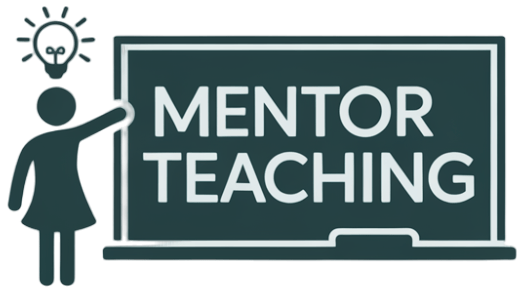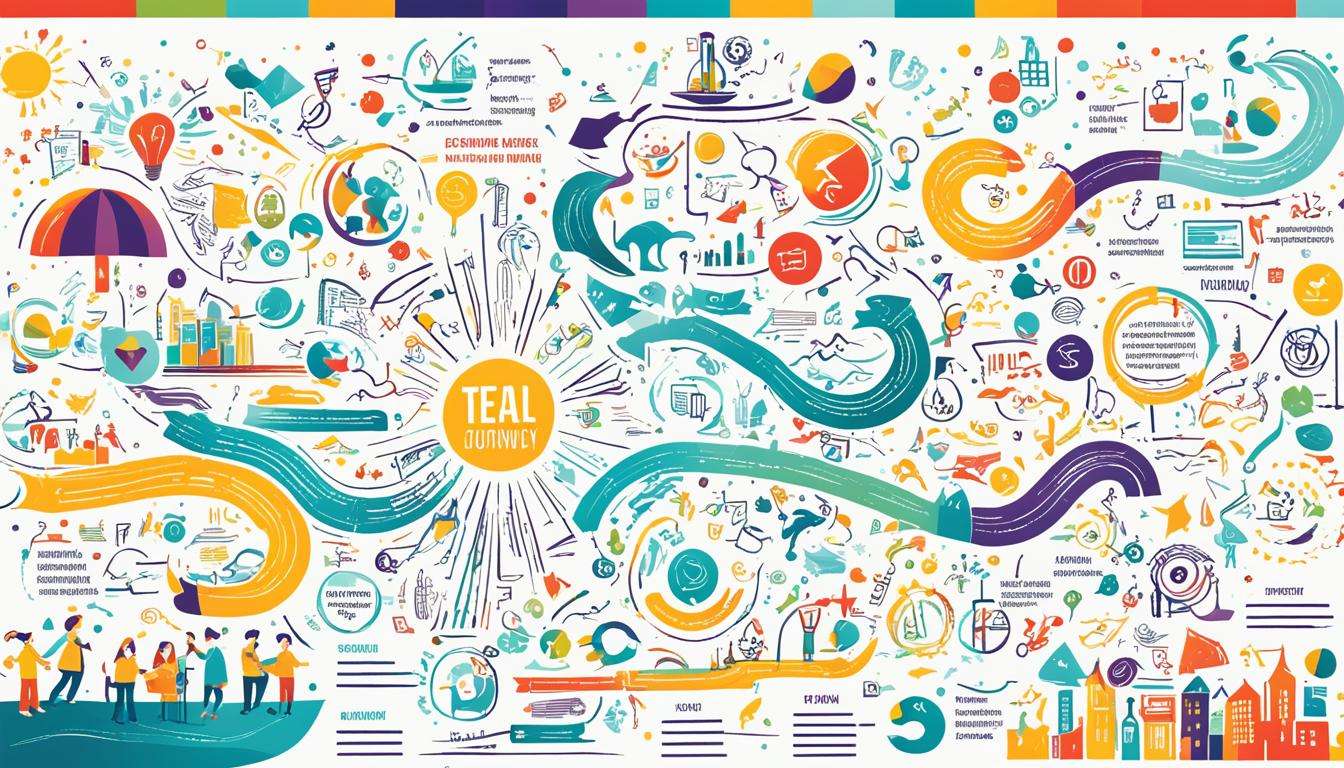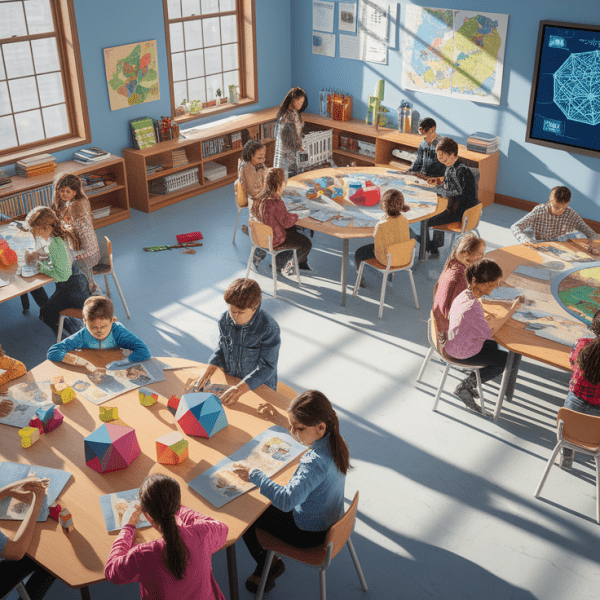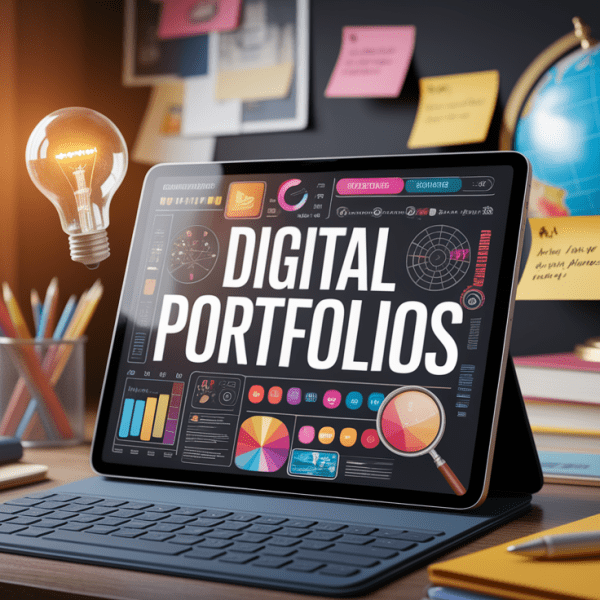A well-structured lesson plan is essential for effective teaching. It provides a roadmap for teachers to guide their students towards learning goals and ensures a systematic approach to instruction. In this article, we will delve into the four phases of a lesson plan, providing valuable insights into their importance and how they contribute to an engaging classroom experience.
So, what are the four phases of a lesson plan? Let’s explore them in detail!
Lesson Objectives: Setting Clear Goals for Learning
Lesson objectives play a crucial role in guiding students’ learning journeys. These objectives are specific goals that students will be able to achieve after completing a lesson. By setting clear and measurable objectives, teachers can ensure effective teaching and provide a clear sense of direction for student learning.
In order to create effective lesson objectives, teachers can use the SMART criteria as a guide. SMART stands for Specific, Measurable, Attainable, Relevant, and Time-based. Let’s break down each element of the SMART criteria:
- Specific: Lesson objectives should clearly state what students will be able to do or demonstrate by the end of the lesson. They should focus on a specific skill or concept that students need to master.
- Measurable: Lesson objectives should be measurable so that teachers can assess whether students have achieved them. This allows for the evaluation of student progress and provides valuable feedback for both teachers and students.
- Attainable: Lesson objectives should be realistic and attainable for students within the given timeframe and resources. They should challenge students to reach their full potential while still being achievable.
- Relevant: Lesson objectives should align with the overall learning goals of the curriculum and be relevant to the students’ needs and interests. They should connect to real-world applications and provide value in the students’ lives.
- Time-based: Lesson objectives should have a timeframe for achievement. This helps to create a sense of urgency and allows teachers to plan their lessons effectively.
Here are a few examples of well-defined and SMART lesson objectives:
- Identify the parts of a cell and explain their functions.
- Determine the methods and tools used in conducting scientific experiments.
- Define and provide examples of literary devices used in a short story.
The image above visually represents the importance of setting clear objectives in the teaching process. It serves as a reminder that lesson objectives provide a clear path for both teachers and students to follow, ultimately leading to successful learning outcomes.
Related Requirements: Aligning with Standards and Certification
Related requirements are the national, state, or school standards that dictate what needs to be taught in a class. For CTE courses, certification requirements also need to be considered. By listing these requirements in the lesson plan, teachers can ensure that they are aligning their teaching with the necessary standards. It also helps when demonstrating compliance to administrators. The specific organizational system of the standards should be used when listing them on the lesson plan.
When preparing lesson plans, it is crucial to consider the related requirements to ensure that students are receiving a comprehensive and well-rounded education. These requirements are developed by governing bodies, such as the Department of Education or local educational agencies, to set a benchmark for student learning and achievement. By aligning with these standards, teachers can ensure that their lessons are meeting the expectations set by these governing bodies.
National standards are guidelines developed at a national level, providing a framework for what students should know and be able to do at each grade level. These standards help to ensure consistency in education across the country. State standards, on the other hand, are specific to each state and may include additional or more detailed requirements compared to national standards. School standards are set by individual schools or school districts and may include specific requirements unique to the school or district.
CTE (Career and Technical Education) courses have an additional layer of requirements in the form of certification. These courses are designed to provide students with the skills and knowledge needed for specific career paths. Certification requirements ensure that students are prepared for the workforce and meet industry standards. It is important for CTE teachers to be aware of these requirements and incorporate them into their lesson plans.
Standard Organizational System
When listing the related requirements on a lesson plan, it is essential to use a specific organizational system to ensure clarity and ease of understanding. Here is an example of how related requirements can be organized:
| Standard Type | Example Standard |
|---|---|
| National | Common Core State Standards (CCSS) |
| State | New York State Learning Standards |
| School | ABC Elementary School Standards |
| CTE Certification | Microsoft Office Specialist Certification |
By using a clear and organized format, teachers can easily identify and reference the specific standards and certification requirements associated with their lesson plans.
Lesson Materials: Gathering Resources for Effective Teaching
In order to effectively teach a lesson and measure student outcomes, it is crucial to have the necessary lesson materials. These materials provide the tools and resources needed to facilitate learning and engage students in the lesson. The choice of materials depends on the topic being taught and the instructional approach taken by the teacher.
Lesson materials can vary widely and may include:
- Student handouts
- Textbooks
- Visual aids
- Grading rubrics
- Activity packets
- Computers
- Tablets
Student handouts are useful for providing students with additional information, practice exercises, or reference materials. Textbooks offer comprehensive content and can be used to supplement classroom instruction. Visual aids such as charts, diagrams, or videos can help students understand complex concepts visually. Grading rubrics provide clear guidelines for assessing student work and ensuring consistency in evaluation. Activity packets contain exercises, assignments, or projects that reinforce the lesson objectives. Computers and tablets can be used for interactive activities, research, or accessing multimedia resources.
When selecting lesson materials, it is essential to consider the specific objectives of the lesson. The materials should align with these objectives and support the learning process. They should also cater to different learning styles and abilities to ensure inclusivity in the classroom.
Let’s take a look at an example of how lesson materials can be incorporated into a lesson plan:
Example: Science Experiment – Plant Growth
| Lesson Materials | Description |
|---|---|
| Student Handouts | Instructions for conducting the experiment and recording data |
| Textbooks | Chapter on plant growth and related concepts |
| Visual Aids | Illustrations of plant anatomy and growth stages |
| Grading Rubrics | Criteria for evaluating experiment observations and data analysis |
| Activity Packets | Worksheets and hands-on activities to reinforce plant growth concepts |
| Computers | Access to online resources and interactive simulations |
By utilizing a variety of lesson materials, educators can create an immersive and engaging learning experience for their students. These resources enhance understanding, promote active participation, and foster meaningful connections between the content and real-world applications.
Lesson Procedure: Step-by-Step Instructions for Effective Teaching
The lesson procedure is a crucial component of a well-designed lesson plan. It provides step-by-step instructions for teachers to effectively deliver the lesson content and engage students in the learning process. By following a structured procedure, teachers can ensure consistency and maximize student understanding and retention.
-
Explore:
In this phase, the teacher introduces the lesson topic and captures students’ interest and curiosity. Strategies such as brainstorming, activating prior knowledge, or presenting a real-life scenario can be used to stimulate students’ thinking and create a foundation for new learning.
-
Learn and Practice:
During this phase, students actively participate in acquiring knowledge and applying new skills. The teacher presents the main content using a variety of teaching strategies and resources, such as lectures, demonstrations, videos, or interactive activities. Students are encouraged to ask questions, collaborate with peers, and engage in hands-on practice to reinforce their understanding.
-
Reflect:
Reflection is a vital part of the learning process. Students need time to analyze and internalize the new information they have acquired. Educators can incorporate reflection activities such as journaling, group discussions, or individual reflection questions to help students connect their learning to their own experiences and deepen their understanding.
-
Reinforce:
This phase aims to strengthen newly acquired knowledge and skills through reinforcement activities. Teachers can provide opportunities for students to apply what they have learned in a practical context, through assessments, projects, or simulations. Reinforcement activities help solidify learning and ensure long-term retention.
Incorporating these four phases into the lesson procedure enhances the teaching and learning experience, promoting active engagement, critical thinking, and meaningful knowledge acquisition. By strategically planning each phase of the lesson, teachers can create a comprehensive and effective learning environment for their students.
Assessment Method: Measuring Student Learning and Progress
The assessment method is a crucial component of effective teaching as it enables educators to evaluate whether students have achieved the lesson objectives and successfully acquired the intended knowledge. To accurately measure student learning and progress, various assessment strategies can be employed, including formative assessments, quizzes, hands-on activities, writing assignments, and group presentations.
Formative assessments are particularly valuable in assessing student progress throughout the lesson. These assessments provide ongoing feedback to both students and teachers, enabling adjustments to instructional strategies and identifying areas where additional support may be required.
Quizzes serve as a useful tool to assess students’ understanding of concepts and their ability to apply knowledge. By designing well-structured quizzes, educators can gauge comprehension levels, identify areas of weakness, and tailor instruction accordingly.
Hands-on activities offer an interactive and engaging way to assess student learning. Through practical tasks and projects, students can showcase their understanding by applying knowledge to real-world scenarios. These activities foster active learning, critical thinking, and problem-solving skills.
Writing assignments not only assess students’ comprehension but also enhance their communication and analytical abilities. These assignments can range from essays and research papers to reflective journals and creative writing exercises. By evaluating written work, educators gain insights into students’ thought processes and depth of knowledge.
Group presentations provide an opportunity for students to demonstrate their understanding of the subject matter while enhancing their presentation and teamwork skills. By assigning group projects and assessing the quality of presentations, educators can determine students’ grasp of the material and their ability to effectively communicate it to others.
Choosing the appropriate assessment method is vital to ensure that it aligns with the lesson objectives and enables a comprehensive evaluation of student learning. By employing a combination of formative assessments, quizzes, hands-on activities, writing assignments, and group presentations, educators can effectively measure student progress and tailor instruction to meet individual needs.
Lesson Reflection: Reflecting on Teaching and Making Improvements
Lesson reflection is a critical part of the teaching process, as it allows teachers to carefully analyze their lessons and make necessary improvements. By engaging in the reflection process, educators can identify areas of success as well as areas that could be enhanced.
During the reflection process, teachers should consider the lesson outcomes and assess whether they were met successfully. This analysis can help teachers gauge the effectiveness of their teaching strategies and approaches, allowing for adjustments and refinements that improve overall teaching quality.
By reflecting on their lessons, teachers gain valuable insights that contribute to personal and professional growth. They can identify strengths and weaknesses in their teaching methods and use this newfound knowledge to continuously improve their skills.
Lesson reflection involves a combination of self-assessment and seeking feedback from students. By actively seeking feedback, teachers can gain valuable perspectives from their students’ experiences and incorporate them into their teaching practices.
Moreover, lesson reflection promotes a culture of lifelong learning, where educators are committed to improving their teaching methods for the benefit of their students. It fosters an environment of continuous improvement and innovation in education.
To facilitate the lesson reflection process, teachers can ask themselves questions such as:
- Did the lesson effectively engage and motivate students?
- Did the lesson align with the learning objectives?
- Were the instructional materials and resources appropriate and effective?
- Did the lesson provide ample opportunities for student participation and interaction?
- Were any challenges or obstacles encountered during the lesson delivery?
- What alternative teaching strategies could be explored to enhance student understanding?
The reflection process should result in actionable insights and specific steps to improve teaching practices. Teachers can then implement these improvements in future lessons, fostering a cycle of continuous growth and improvement.
Example Lesson Reflection Worksheet
Here is an example of a lesson reflection worksheet that teachers can use:
| Reflection Questions | Summary of Insights | Actions for Improvement |
|---|---|---|
| Did the lesson effectively engage and motivate students? | Some students were actively engaged, but others seemed disinterested. | Explore different strategies to increase student engagement, such as incorporating more hands-on activities or group discussions. |
| Did the lesson align with the learning objectives? | The lesson partially aligned with the learning objectives. | Revise the lesson plan to ensure clear alignment with the learning objectives by providing more focused instruction and activities. |
| Were the instructional materials and resources appropriate and effective? | Some of the instructional materials were outdated and not as effective as anticipated. | Research and incorporate more up-to-date and engaging instructional materials into future lessons. |
| Did the lesson provide ample opportunities for student participation and interaction? | Student participation and interaction were limited. | Implement strategies to encourage more student participation, such as small group discussions or interactive multimedia activities. |
| Were any challenges or obstacles encountered during the lesson delivery? | Technical difficulties with the audiovisual equipment disrupted the flow of the lesson. | Test and prepare all technical equipment in advance to minimize disruptions during future lessons. |
| What alternative teaching strategies could be explored to enhance student understanding? | Some students struggled to grasp a specific concept. | Investigate alternative teaching strategies, such as using real-life examples or incorporating visual aids, to enhance student understanding of the concept. |
By consistently practicing lesson reflection and implementing improvements, teachers can create a more effective and engaging learning environment for their students. It is through the process of reflection and self-assessment that educators can continually refine their teaching methods, resulting in improved lesson outcomes and student success.
Conclusion
In conclusion, understanding the four phases of a lesson plan is crucial for the implementation of effective teaching strategies. By carefully considering and following these phases, educators can ensure that their lessons are well-planned and impactful, leading to enhanced student learning outcomes.
The first phase, explore, allows students to develop curiosity and engage with the topic or concept being taught. Through hands-on activities and discussions, students actively participate in the learning process, laying the foundation for the acquisition of knowledge.
Once students have explored the topic, the learn and practice phase provides opportunities for deepening understanding and skill development. This phase incorporates various teaching strategies such as group work, problem-solving activities, and individual practice to reinforce concepts and promote active learning.
Reflection, the third phase, enables both students and educators to evaluate their progress and identify areas for improvement. By engaging in thoughtful reflection, teachers can enhance their teaching methods and address any gaps in student comprehension, leading to continuous growth and improvement.
Finally, reinforcing the learned material ensures that students retain knowledge over time. This phase involves providing opportunities for application and review, allowing students to solidify their understanding and transfer it to real-world contexts.
Incorporating these four phases into lesson planning not only guides teachers in delivering effective instruction but also supports student engagement, comprehension, and long-term retention. By setting clear objectives, aligning with standards, utilizing appropriate materials and assessment methods, and engaging in reflective practice, educators can create a dynamic and impactful learning environment that promotes student success.




